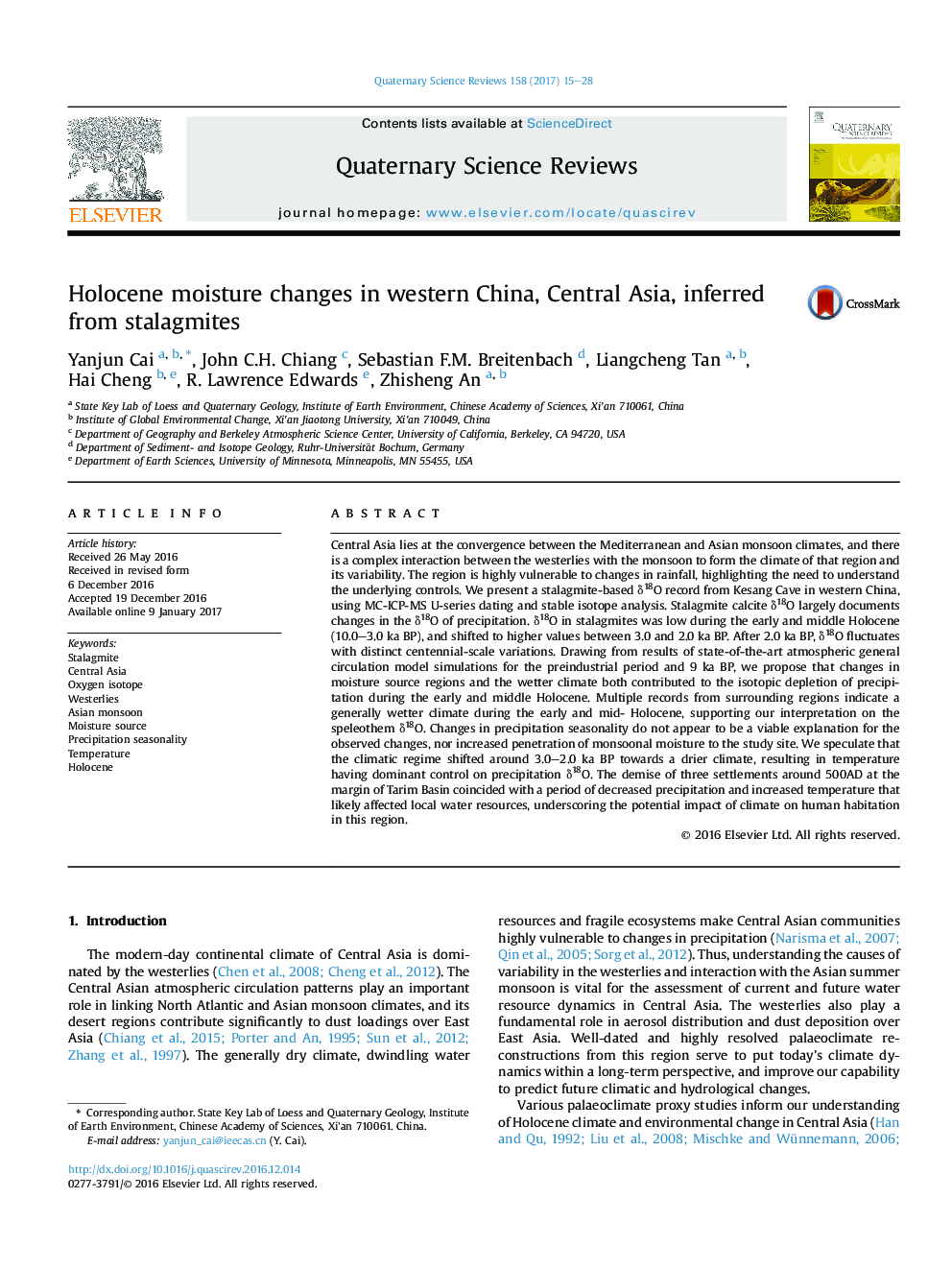| کد مقاله | کد نشریه | سال انتشار | مقاله انگلیسی | نسخه تمام متن |
|---|---|---|---|---|
| 5786816 | 1640777 | 2017 | 14 صفحه PDF | دانلود رایگان |
- A stalagmite δ18O record from Central Asia records Holocene hydrological changes.
- Moisture source changes dominates precipitation δ18O in Central Asia between 10.0 and 3.0 ka BP.
- Climate changed towards drier conditions between 3.0 and 2.0 ka BP.
- Temperature changes contributed to speleothem δ18O variations since 2.0 ka BP.
Central Asia lies at the convergence between the Mediterranean and Asian monsoon climates, and there is a complex interaction between the westerlies with the monsoon to form the climate of that region and its variability. The region is highly vulnerable to changes in rainfall, highlighting the need to understand the underlying controls. We present a stalagmite-based δ18O record from Kesang Cave in western China, using MC-ICP-MS U-series dating and stable isotope analysis. Stalagmite calcite δ18O largely documents changes in the δ18O of precipitation. δ18O in stalagmites was low during the early and middle Holocene (10.0-3.0 ka BP), and shifted to higher values between 3.0 and 2.0 ka BP. After 2.0 ka BP, δ18O fluctuates with distinct centennial-scale variations. Drawing from results of state-of-the-art atmospheric general circulation model simulations for the preindustrial period and 9 ka BP, we propose that changes in moisture source regions and the wetter climate both contributed to the isotopic depletion of precipitation during the early and middle Holocene. Multiple records from surrounding regions indicate a generally wetter climate during the early and mid- Holocene, supporting our interpretation on the speleothem δ18O. Changes in precipitation seasonality do not appear to be a viable explanation for the observed changes, nor increased penetration of monsoonal moisture to the study site. We speculate that the climatic regime shifted around 3.0-2.0 ka BP towards a drier climate, resulting in temperature having dominant control on precipitation δ18O. The demise of three settlements around 500AD at the margin of Tarim Basin coincided with a period of decreased precipitation and increased temperature that likely affected local water resources, underscoring the potential impact of climate on human habitation in this region.
Journal: Quaternary Science Reviews - Volume 158, 15 February 2017, Pages 15-28
